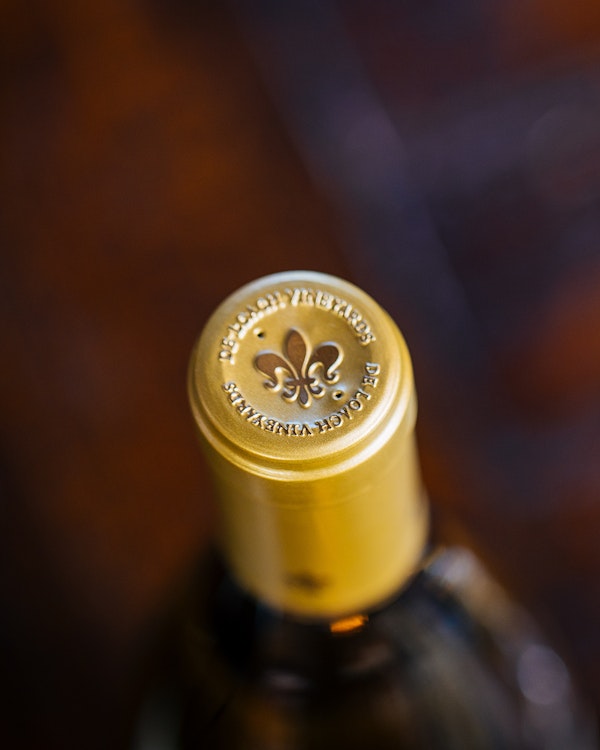
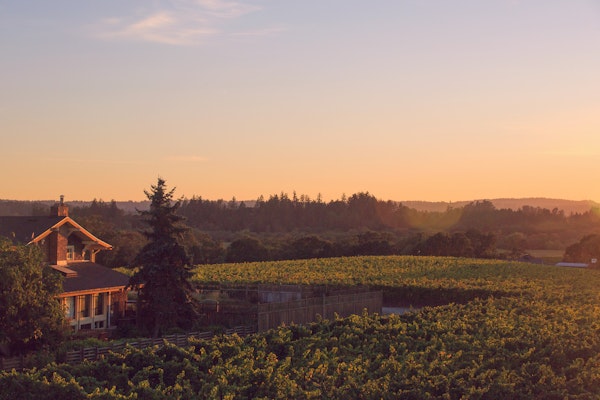
With wine roots deep in Burgundy, the Boisset family understands that its native home and the iconic Pinot Noir grape reached their exalted status in the wine world because vintners allowed extraordinary sites to speak — no matter how small or unassuming they might look to a casual observer. What matters is what presents in the glass. The DeLoach family understood this as well, becoming one of the earliest Russian River Valley vintners to create individual bottlings that bear the names of the best sites within its vineyard portfolio. The winery continues to showcase exceptional small-lots from its Vineyard Designate Collection.
The sites in the collection are primarily in Sonoma County, with the majority of these in the Russian River appellation, including bottlings from Marin County to Mendocino County. The grapes from these vineyard sites are extraordinary due to their physical position on slopes or ridges like the Maboroshi, Pennacchio and Stubbs vineyards, others due to rare old vines or unusual clones and others due to growers with decades of proven excellence. Many vineyards share more than one of these advantages including the Ritchie, Hawk Hill and Heintz vineyards.
Vineyard Partners
Vineyard
Estate Vineyard
DeLoach Vineyards, the pioneering Russian River Valley producer of award-winning Pinot Noir, Chardonnay, and Zinfandel, released its Estate Chardonnay and Pinot Noir with the 2010 vintage. Our Estate Vineyard is certified Biodynamic® and organic and represents the culmination of a long and dedicated effort to become a more self-sustaining and environmentally friendly producer of fine wine.
When the Boisset family purchased DeLoach Vineyards in 2003, one of their first decisions was to convert the 17-acre estate vineyard surrounding the winery to organic and Biodynamic® farming. Decades of conventional chemical farming had left the soil tired and drained. The vineyard, with its prime location on an eastern bench of the Russian River, is one of the primary assets of the winery and one of the first things that visitors see upon arrival. Restoring the vineyard was a chance for the new owners, under the leadership of Jean-Charles Boisset, to demonstrate their commitment to changing the wine industry from within. These changes included Earth-friendly innovations in how wine is packaged and delivered to consumers, but they began with the Earth itself. The DeLoach Estate Vineyard would not just be replanted, but reborn in order to exemplify how great wine comes from great sites that are allowed to express themselves naturally.
The process of restoring the DeLoach Estate Vineyard was conducted from the perspective of nature. A conventional farmer might have simply pulled out the old vines and put in new ones. The DeLoach team, however, began by restoring the health of the land. The vineyard was allowed to recharge itself by growing cover crops that return essential nutrients to the soil. Farmers call this letting the land go “fallow”; simply put, do nothing but let the land grow something different for a change. Biodynamic agriculture takes the restoration process even further.
The first cover crop planted was safflower, whose deep roots drew moisture up and out of the sticky clay soil of the Russian River floodplain. Once the soil dried out to a more balanced level of moisture, it was turned over at a depth of several feet. This introduced more space for oxygen and water, which make up nearly half the composition of good winegrowing soil. The soil was then amended with a combination of rock phosphate (a natural slow-release form of phosphorus), lime (to raise the soil pH and adjust the calcium/magnesium ratio), and a Biodynamic compost preparation.
Production of the compost had begun the winter before and was a mixture of organic barley straw and clean cow manure containing no hormones or other chemicals. DeLoach acquired manure from local dairies, thus recycling the natural nutrients from the manure back into the local ecosystem. A hundred tons of manure and straw were formed into a large windrow, covered with straw to hold in moisture and heat and thereby encourage metabolic activity. At certain points in the compost’s development, the winery added Biodynamic preparations, teas made from beneficial plants. The preparations further stimulated and focused the compost’s metabolic growth.
During the first cover crop season, DeLoach applied horn manure to the soil to introduce more beneficial microorganisms. Horn manure is made by filling a cow horn with dried cow manure, burying it in the vineyard, and letting it remain there all winter. The horn shape is one of nature’s inventions, and Biodynamic adherents see it as focusing the decomposition process while the horn is buried underground. When fully broken down, the finished compost is essentially “bugs in a jug,” or soil inoculum, because it contains microorganisms that have naturally adapted to the farm’s soil conditions.
In the second year of vineyard restoration, the vineyard soil was again inoculated with horn manure and its host of beneficial microorganisms. These minute living creatures carry nutrients into the soil and distribute them evenly to encourage the formation of good soil structure. Then DeLoach planted a winter cover crop of barley, vetch (which fixes nitrogen in the soil), and indicator plants, which are known to either thrive or wither under specific soil conditions. Like a canary in a coal mine, the indicator plants helped DeLoach’s vineyard experts understand what was going on in the underlying soil.
After the second cover crop had successfully run its course, the vineyard was ready to plant to Pinot Noir and Chardonnay. Planting took place according to the Biodynamic calendar, which takes account of celestial and terrestrial movements such as the moon and tides. According to astronomers and geologists, our Earth and moon are part of a single gravitational system because of their close proximity. This explains why the moon can create the powerful tidal forces that are easily observable at the seashore or in the mouths of rivers as they reach the sea. In fact, the moon creates tidal effects in many other places as well, including lakes, streams, underground reservoirs, and river floodplains like the one surrounding DeLoach Vineyards.
Even after planting the new grapevines, the vineyard’s rebirth was not complete. From a Biodynamic point of view, everything moves in cycles: instead of endings, nature continually finds new beginnings. DeLoach therefore continues to plant a variety of cover crops alongside the vines to encourage beneficial insects and microbial diversity, and enhance soil fertility and structure. The estate vineyard is now a rich ecosystem in which grapevines are able to express the unique combination of soil, climate, air, water, nutrients and human attention that turn the concept of terroir into a tangible reality. 2010 marks the first vintage of wines from the estate vineyards at DeLoach Vineyards since their conversion to Biodynamic farming.
“We strive to nourish and enhance the biodiversity of the DeLoach Estate vineyard. This comprehensive approach to our vineyards allows the true nature of this exquisite terroir to shine through in the wine.”
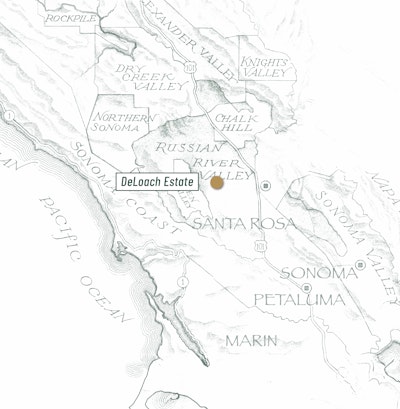
Neighborhood
Santa Rosa Plains
Appellation
Russian River Valley
Acres
20 acres, 17 planted
Soil Type
Huichica Loam
Elevation
100 ft
Grower
Victor Torres
Year Planted
2006
Varietal
Pinot Noir, Chardonnay, Pinot Gris, Pinot Blanc
Clone
23, 828, 115, 777, La Tache, Mt Eden, Calera, Old Wente, Montrachet, 809, 4, 37, 54, 9
Certifications
CCOF, Demeter, CSWA
Maboroshi
Tucked into the rolling hills of southwestern Sebastopol, the Maboroshi Vineyard is gently sheltered by western ridges that guard against excessive coastal fog and wind. Here, the cool afternoon breezes offer a subtle coastal influence, creating an ideal microclimate for growing expressive fruit.
Named Maboroshi—a Japanese word meaning “whimsical dream”—the vineyard embodies what it represented to its founders, Tom and Rebecca: a beautiful, fleeting vision brought to life.
“Each spring we look forward to the rebirth of our vineyard as the buds begin to burst, and we feel personally connected to each of our vines as if they were our own children. Nurturing, tending, tempering them through the course of the year. And our reward is their tender fruits.”
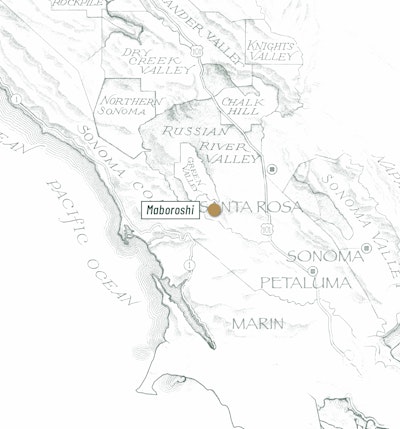
Neighborhood
Sebastopol Hills
Appellation
Russian River Valley
Acres
13 Acres
Soil Type
Steinbeck Loam
Elevation
400 - 600 ft
Grower
Tom and Rebecca Kisaichi
Year Planted
1999
Varietal
Pinot Noir
Clone
115, 667
Certifications
CCOF, Demeter, CSWA
van Der Kamp
Perched on a north-facing bench of Sonoma Mountain, the van der Kamp Vineyard occupies a site long revered by local Native American communities, who believe the mountain's summit marks the beginning of the world. For over forty years, the van der Kamp family has cultivated this land with care, producing Pinot Noir of exceptional character.
As one of California’s oldest Pinot Noir vineyards, it benefits from remarkable diversity in soil composition, elevation, and exposure to sun and wind—factors that lend nuance and complexity to the wines grown here.
“Martin was always involved in the wine industry in Calistoga and St. Helena. We did it as a hobby for decades, and had so much fun at it, we made it a business.”
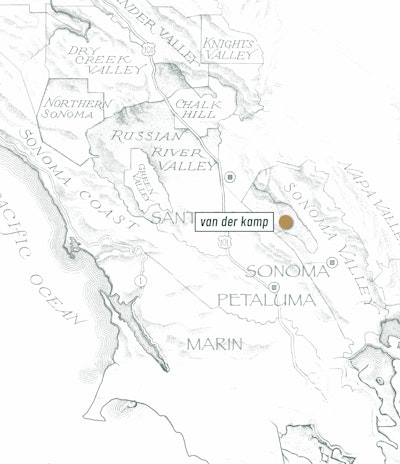
Appellation
Sonoma Mountain
Acres
25
Soil Type
Spreckels Loam
Elevation
1,500 ft
Grower
Malia van der Kamp
Year Planted
1952
Varietal
Pinot Noir, Pinot Meunier
Clone
828, 23, Old Vine, 777
Certifications
CCOF, Demeter, CSWA
Hawk Hill
Named for the Red-tailed and Cooper’s hawks that often glide on the thermals above the vineyard, this site enjoys a striking vantage point, with south- to southeast-facing vines that frequently rise above the fog line. The cool marine influence tempers the warmth of the sun, extending the growing season and allowing the fruit to slowly develop rich sugars while preserving its natural acidity—a balance that results in wines of both power and finesse.
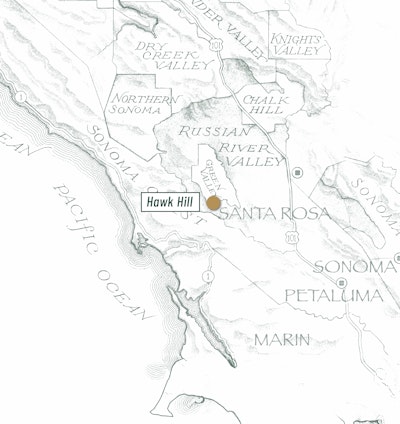
Neighborhood
Green Valley
Appellation
Green Valley of the Russian River Valley
Acres
25
Soil Type
Goldridge Sandy Loam
Elevation
386 - 610 ft
Grower
Margaret and Bill Yarak
Year Planted
1994
Varietal
Chardonnay
Clone
Clone 5
Certifications
CSWA
Heintz
Growing some of the most sought after grapes in the Russian River Valley, the Heintz family has farmed the same coastal ridgeline for over a century. With a strong maritime influence, this old-vine vineyard is one of California's most iconic sites. The coastal fog moves directly through the vineyard during the growing season resulting in great diversity and detail in aromas and flavors including complex savory and mineral elements.
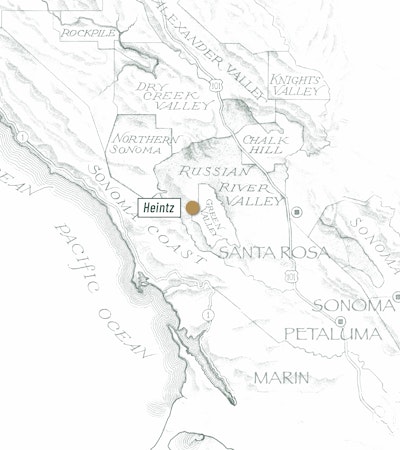
Neighborhood
Green Valley
Appellation
Green Valley of Russian River Valley
Acres
45
Soil Type
Goldridge Sandy Loam
Elevation
800 ft
Grower
Charlie Heintz
Year Planted
1982
Varietal
Pinot Noir, Chardonnay
Clone
Clone 113, Beringer, Swan, Pommard, and 115, Clone 4
Certifications
CSWA
Ritchie
For over 40 years, Kent Ritchie has farmed his namesake vineyard with unwavering dedication and personal care. Planted in 1972, this site is perched on a rolling, northwest-facing hillside that benefits from cooling coastal breezes and the morning fog typical of the Russian River Valley. The vineyard’s old Chardonnay vines, rooted in sandy Goldridge soils layered with ancient seabed sediment, volcanic ash, pockets of tufa rock, and sloping benchlands that descend toward the river, contribute to its status as a truly unique “Grand Cru” site.
The age and clonal selection of the vines help preserve the natural minerality and bright acidity of the fruit, yielding wines that are vibrant, fresh, and deeply expressive. Wines from this site are known for their rare complexity, intensity, and sense of place—hallmarks of Ritchie's enduring legacy.
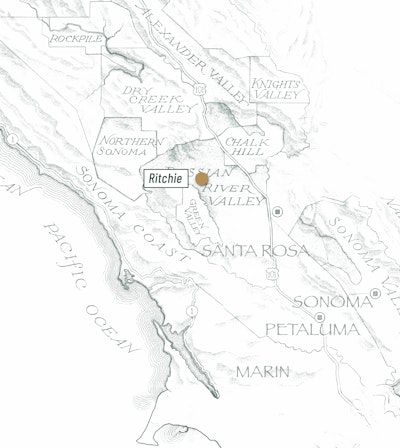
Neighborhood
Middle Reach
Appellation
Russian River Valley
Acres
64
Soil Type
Goldridge Sandy Loam
Elevation
150 ft
Grower
Kent Ritchie
Year Planted
1972
Varietal
Chardonnay
Clone
Old Wente, ‘C’
Certifications
CCWA
Pennacchio
The Pennacchio Vineyard is located in the cool southwestern reaches of the Sebastopol hills. The vineyard is on an easterly facing slope beneath coastal ridges that protect it from the ocean’s cooling fog. The vineyard is planted to Pinot Noir Clones 115 and 667 on Saint George rootstock. This unusual pairing of clone and rootstock contributes to a more robust growth, delayed ripening and larger clusters. The fruit from this vineyard is the very definition of our focus on terroir.
“I truly enjoy grape growing and working with and teaching my children and grandchildren the process behind growing the highest quality Pinot Noir. Being intimately involved in every aspect of this process is what keeps me young. Every year I look forward to the journey from dormancy, to bud break, to harvest day.”

Neighborhood
Sebastopol Hills
Appellation
Russian River Valley
Acres
6.5
Soil Type
Goldridge Sandy Loam
Elevation
400 ft
Grower
Joe and Mark Pennacchio
Year Planted
1995
Varietal
Pinot Noir
Clone
Clone 115 and 667
Stubbs
Stubbs Vineyard is located in a narrow valley that opens to the south of the vineyard. The vineyard is divided by a seasonal creek that helps drain the area of cold air during the frost season. This is very important for this site as the vineyard is usually very early to bud out and late to ripen, as it is one of the vineyard sites closest to the very cold Tomales Bay. This same drainage acts as a channel for cold air and fog to work its way back up to the vineyard, making it one of the coldest sites for non-sparkling Pinot Noir in Marin.
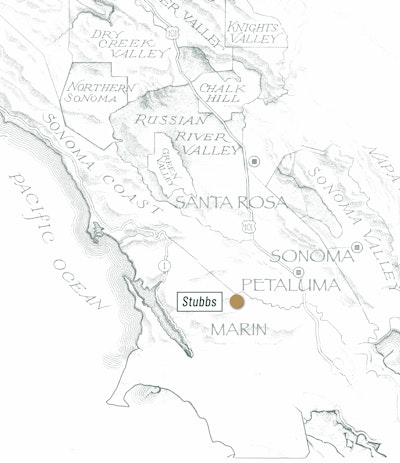
Neighborhood
Petaluma Gap
Appellation
Petaluma Gap
Acres
11
Soil Type
Blucher Loam
Elevation
480 ft
Grower
Tom & Mary Stubbs
Year Planted
1996
Varietal
Chardonnay, Pinot Noir
Clone
Clone 76, Clone 114
Maffei
Nestled along Olivet Road in the heart of the Russian River Valley, Maffei Vineyard is a historic site revered for its old vine Zinfandel. Registered with the Historic Vineyard Society, the vineyard was first planted in 1928 by Italian immigrants Umberto and Maria Maffei, who fulfilled their dream of owning land after arriving in the U.S. in 1912. Today, nearly a century later, the gnarly, head-trained vines still thrive under the care of their granddaughter, Joanne Maffei, who lovingly manages the vineyard with a vine-by-vine approach that honors her family’s legacy.
Joanne sees herself as an essential part of the winemaking process, committed to growing grapes that are impeccably clean, ripe, and site-expressive. Her meticulous farming yields Zinfandel that captures the quintessential Russian River Valley character—dark, layered fruit balanced by vibrant aromatics and floral nuance.
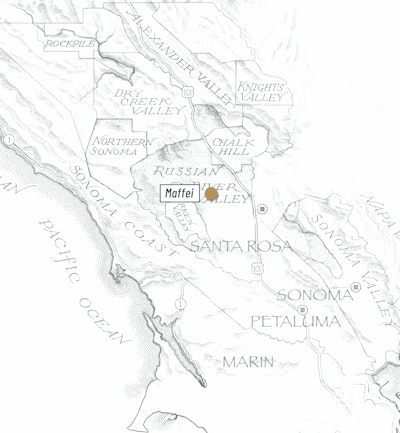
Neighborhood
Santa Rosa Plain
Appellation
Russian River Valley
Acres
21
Soil Type
Huichica Loam
Elevation
110 ft
Grower
Joanne Maffei
Year Planted
1928
Varietal
Zinfandel Field Blend
Azaya
Tucked into the rolling hills of West Marin, Azaya Vineyard is a rare gem in the southernmost reach of the Petaluma Gap—one of the only vineyards in this secluded, coastal region. Named after the Sanskrit word for “sanctuary,” Azaya lives up to its name, offering a cool, fog-laced refuge for Pinot Noir vines planted on southwest-facing slopes of well-drained sandy loam. This protected site captures the morning fog and benefits from dramatic temperature swings—intense daytime warmth followed by cold nights—which extend the growing season and allow the grapes to ripen slowly and evenly.
Originally planted by Mark Pasternak for the McEvoy family, Azaya is home to a thoughtful mix of Pinot Noir clones, each contributing layers of character. The site’s unique combination of marine influence, elevation, and soil yields small, thick-skinned berries with concentrated flavors and vibrant acidity. The resulting wines are strikingly pure expressions of Pinot Noir: complex, energetic, and unmistakably shaped by the vineyard’s rare Marin terroir.
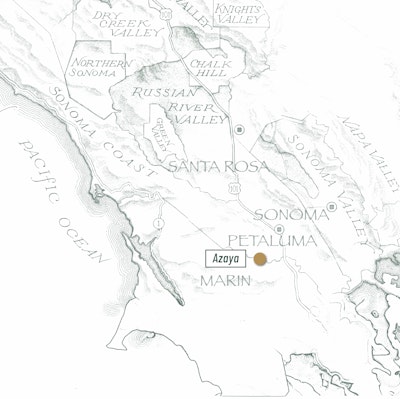
Appellation
Petaluma Gap
Acres
18
Soil Type
Los Osos-Bonnydoon
Elevation
420 ft
Grower
McEvoy Family
Year Planted
2005
Varietal
Pinot Noir
Clone
Clone 828, 115, 777
Certifications
CCWA
Fanucchi - Wood Road
The Fanucchi-Wood Road Vineyard is a historic seven-acre site planted in 1890, making it one of the oldest vineyards in Sonoma County. Nestled on a slight rise along Wood Road in the Russian River Valley AVA, the vineyard is organically farmed and dry-farmed, with head-trained Zinfandel vines that have been lovingly hand-tended by the Fanucchi family for over 40 years. Peter Fanucchi raised the gnarled old vines to chest height, a unique adaptation that enhances sun exposure and air circulation—revitalizing the century-old plants and improving fruit quality.
Planted in well-drained Goldridge sandy loam soils, the vineyard produces small, intensely flavored berries with bright cherry and blackberry notes. The low-fertility soils and meticulous vine care yield a bold, concentrated, and age-worthy Zinfandel with remarkable depth and character—a true expression of heritage and terroir.
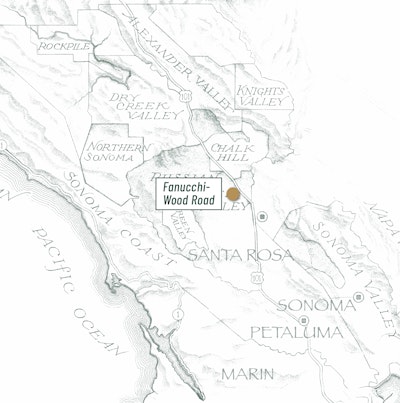
Neighborhood
Santa Rosa Plain
Appellation
Russian River Valley
Acres
7
Soil Type
Sandy Loam
Elevation
135 ft
Grower
Peter Fanucchi
Year Planted
1981
Varietal
Trousseau Gris and Zinfandel
Barricia
Tucked into the heart of Sonoma Valley, this historic vineyard—now known as Barricia—embodies over a century of winemaking heritage and resilience. Once owned by General Mariano Vallejo, the land was traded in the 1840s to his children’s music teacher in exchange for piano lessons. Today, that humble barter lives on in the form of 100+ year-old Zinfandel vines, which have become deeply rooted in the landscape, creating a vineyard that feels more like a wild, weathered orchard than a manicured estate.
In 1978, Barbara Olesen and Patricia Herron purchased the 36-acre site, combining their first names to christen it “Barricia.” Though neither came from a farming background, their dedication and hands-on care helped preserve the old vines, which now yield intensely flavored Zinfandels layered with notes of blackberry and pepper.
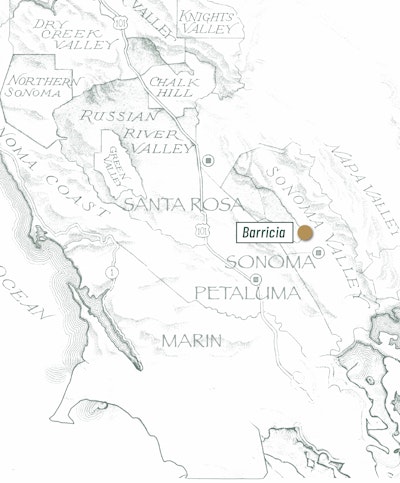
Appellation
Sonoma Valley
Acres
36
Soil Type
Tuscan Cobbly Clay Loam
Grower
Mel and Angela Dagovitz
Year Planted
1890
Varietal
Zinfandel
Devils Gulch
Devil’s Gulch Vineyard, planted in western Marin County, is one of California’s coolest and windiest Pinot Noir sites. Planted in 1980 on steep terraces with shallow soils, its rugged terrain and coastal climate naturally limit yields—often to less than one ton per acre—producing small, concentrated berries with a distinct and expressive character.
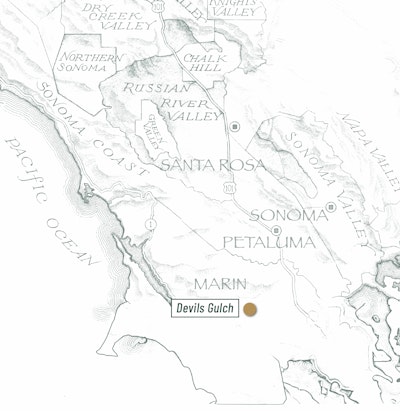
Appellation
Marin County
Acres
65
Soil Type
Tocaloma-Saurin Clay Loam
Grower
Mark Pasternak
Year Planted
1980
Varietal
Pinot Noir
Annapolis Ridge
Perched on a steep 30-degree slope along the remote and rugged western edge of Sonoma County, Annapolis Ridge Vineyard is a hidden gem of the West Sonoma Coast appellation. This extraordinary site, surrounded by undulating hills and mountain ridges near the Pacific Ocean, is shaped by its dramatic coastal setting. The journey to the vineyard winds through remote terrain, but those who arrive are greeted by breathtaking views and the unmistakable imprint of a coastal climate that defines every vine.
Here, the unique combination of sandy, well-draining soils, high elevation, and extreme diurnal shifts—where temperatures can drop 40 degrees overnight—creates an environment ideal for growing exceptional Pinot Noir. Coastal fog cools the vines each evening, while the morning sun clears the mist to reveal warm, sunlit afternoons. This balance of cool and heat, along with the vineyard’s meticulous care, results in Pinot Noirs that are vibrant, aromatic, and full-bodied—capturing the essence of a truly distinctive corner of California wine country.
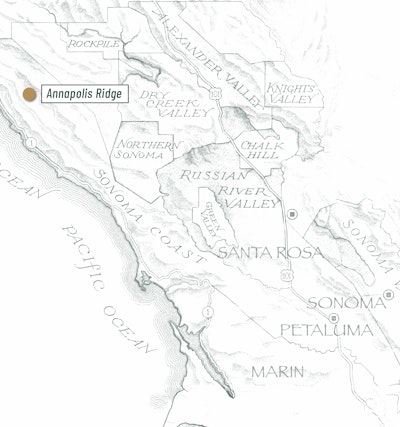
Appellation
West Sonoma Coast
Acres
44
Soil Type
Goldridge Fine Sandy Loam
Year Planted
2001, 2002, 2003
Varietal
Pinot Noir
Clone
828, Elite, 23, 115
Swicegood
DeLoach has proudly partnered with Swicegood Vineyards for over 25 years. Planted in well-drained Goldridge soils, the vineyard slopes gently to the south and west, benefiting from optimal sun exposure throughout the day. The westernmost blocks lie on a steep, eroded hillside facing the Pacific, producing Pinot Noir with distinctive aromatics and a finely textured, elegant expression.
“Working with DeLoach Vineyards is like a match made in heaven. We both have a genuine respect and love for the land.”
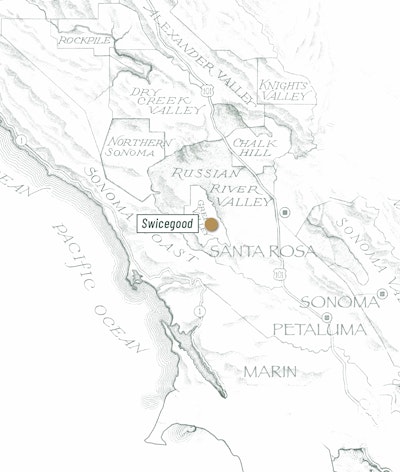
Neighborhood
Green Valley
Appellation
Green Valley of the Russian River Valley
Acres
8.5
Soil Type
Goldridge Fine Sandy Loam
Grower
Anita Rodero
Year Planted
2000
Varietal
Pinot Noir
Masút
Masút Vineyard sits at the headwaters of the Russian River in the rugged Eagle Peak, Mendocino County AVA—an area known for coastal influence, elevation, and dramatic temperature swings. The DeLoach grapes come from the “Lower” vineyard, where weathered sedimentary rock and clay soils produce vibrant, expressive Pinot Noir with remarkable depth and character.
Founded by brothers Ben and Jake Fetzer in the 1990s, Masút was born from a family legacy of winemaking and a vision for hillside Pinot Noir. Named after a local Native American village meaning “dark, rich earth,” Masút reflects a deep connection to the land and the unique terroir of Eagle Peak.
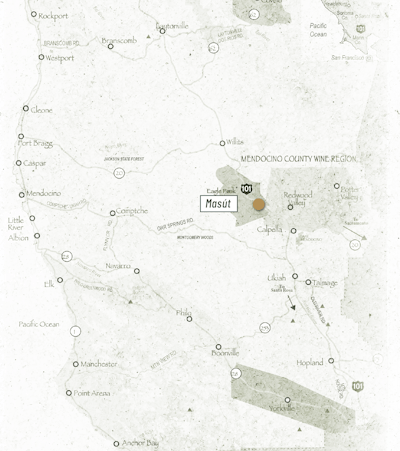
Appellation
Eagle Peak
Acres
40
Soil Type
Pinole Gravelly Clay Loam
Elevation
900 - 1600 feet
Grower
Jacob Fetzer
Year Planted
1996
Varietal
Pinot Noir
The Neighborhoods of Russian River Valley
As a winery deeply rooted in both Burgundy and the Russian River Valley, DeLoach Vineyards embraces the neighborhood approach in winemaking to highlight the unique expressions of terroir—an influence drawn directly from its Burgundian heritage.
Owner Jean-Charles Boisset, who grew up in Burgundy and owns esteemed vineyards there, understands that great wine is a reflection of place. In Burgundy, vineyards are classified by their specific terroirs, from Grand Cru to Village wines, each defined by its soil, climate, and micro-environment. Inspired by this philosophy, DeLoach applies a similar mindset to the Russian River Valley, where distinct subregions, or “neighborhoods,” including Middle Reach, Santa Rosa Plains, and Green Valley, stretch from Sebastopol to Santa Rosa and Forestville to Healdsburg, showcasing different characteristics of Pinot Noir and Chardonnay.
By focusing on these neighborhood distinctions, DeLoach crafts wines that capture the essence of each site, much like Burgundy’s terroir-driven approach. This commitment allows the winery to honor its Burgundian roots while celebrating the diversity of the Russian River Valley, creating wines that are both expressive and authentic to their origins.
Santa Rosa Plains
The Santa Rosa Plains, situated east of Santa Rosa between the Laguna de Santa Rosa and Sonoma Mountain, features flat terrain with well-drained Huichica clay loam soils. Known for some of the Russian River Valley’s oldest Zinfandel vineyards, this area produces balanced, expressive wines rooted in a rich viticultural heritage.
De Loach Estate Vineyard
Fanucchi-Wood Road Vineyard
Maffei Vineyard

Middle Reach
Green Valley lies in the southwestern part of the Russian River Valley AVA and is the only officially recognized sub-appellation within the region. Encompassing the towns of Sebastopol, Forestville, and Occidental, it benefits from its proximity to the Pacific Ocean, which brings cool coastal fog and a long growing season. Its signature Goldridge soils—fine, sandy loam with excellent drainage—support Pinot Noir and Chardonnay with vibrant acidity, aromatic complexity, and refined structure.
Ritchie Vineyard
Green Valley
Green Valley lies in the southwestern part of the Russian River Valley AVA and is the only officially recognized sub-appellation within the region. Encompassing the towns of Sebastopol, Forestville, and Occidental, it benefits from its proximity to the Pacific Ocean, which brings cool coastal fog and a long growing season. Its signature Goldridge soils—fine, sandy loam with excellent drainage—support Pinot Noir and Chardonnay with vibrant acidity, aromatic complexity, and refined structure.
Hawk Hill
Heintz Vineyard
Swicegood Vineyard
Sebastopol Hills
Sebastopol Hills, located southwest of Sebastopol in the southwestern Russian River Valley, is the coolest sub-region of the AVA, benefiting from marine air funneled through the Petaluma Gap. Its gently rolling hills and Goldridge soils provide ideal conditions for growing vibrant, elegant Pinot Noir and Chardonnay marked by bright acidity and complex aromatics.
Maboroshi Vineyard
Pennacchio Vineyard
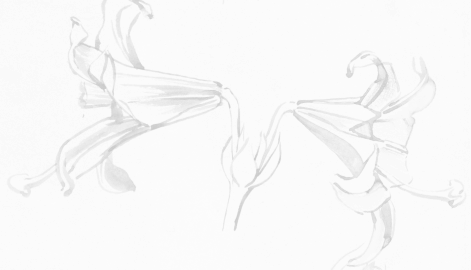
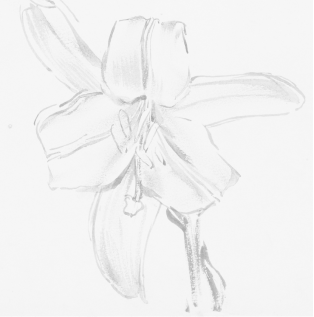
Discover De Loach


Events
VIEW EVENTS